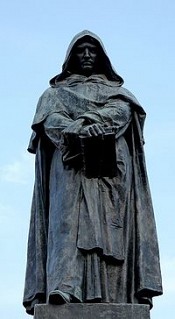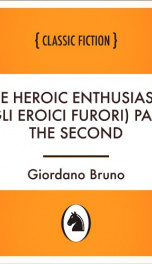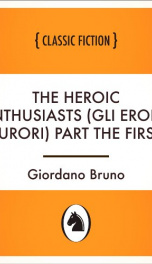Bruno Giordano

Giordano Bruno, born Filippo Bruno (1548 – February 17, 1600), was an Italian philosopher, mathematician and astronomer best known as a proponent of heliocentrism and the infinity of the universe. His cosmological theories went beyond the Copernican model in identifying the sun as just one of an infinite number of independently moving heavenly bodies: he is the first man to have conceptualized the universe as a continuum where the stars we see at night are of identical nature as the sun. He was burned at the stake by authorities in 1600 after the Roman Inquisition found him guilty of heresy. After his death he gained considerable fame; in the 19th and early 20th centuries, commentators focusing on his astronomical beliefs regarded him as a martyr for free thought and modern scientific ideas. However, later assessments have challenged the description of his beliefs as scientific, and suggest that his ideas about the universe played a substantially smaller role in his trial than his pantheist beliefs about God.[1][2] In addition to his cosmological writings, Bruno also wrote extensive works on the art of memory, a loosely organized group of mnemonic techniques and principles. More recent assessments, beginning with the pioneering work of Frances Yates, suggest that Bruno was deeply influenced by magical views of the universe inherited from Arab astrological magic, Neoplatonism and Renaissance Hermeticism.[3] Other recent studies of Bruno have focused on his qualitative approach to mathematics and his application of the spatial paradigms of geometry to language.[4] Filippo Bruno was born in Nola (in Campania, then part of the Kingdom of Naples) in 1548, the son of Giovanni Bruno, a soldier, and Fraulissa Savolino. As a youth, he was sent to Naples for education. He was tutored privately at the Augustinian monastery there, and attended public lectures at the Studium Generale.[5] At the age of 17, he entered the Dominican Order at the monastery of San Domenico Maggiore in Naples, taking the name Giordano, after Giordano Crispo, his metaphysics tutor. He continued his studies there, completing his novitiate, and became an ordained priest in 1572 at age 24. During his time in Naples he became known for his skill with the art of memory and on one occasion traveled to Rome to demonstrate his mnemonic system before Pope Pius V and Cardinal Rebiba. Bruno in later years claimed that the Pope accepted his dedication to him of the lost work On The Ark of Noah at this time.[6] Such an honor suggests that Bruno was distinguished for outstanding ability. But Bruno's taste for free thinking and forbidden books soon caused him difficulties, and given the controversy he caused in later life it is surprising that he was able to remain within the monastic system for eleven years. In his testimony to Venetian inquisitors during his trial, many years later, he indicates that proceedings were twice taken against him for having cast away images of the saints, retaining only a crucifix, and for having made controversial reading recommendations to a novice. Such behavior could perhaps be overlooked, but Bruno's situation became much more serious when he was reported to have defended the Arian heresy, and when a copy of the banned writings of Erasmus, annotated by him, was discovered hidden in the convent privy. When he learned that an indictment was being prepared against him in Naples he fled, shedding his religious habit, at least for a time.[7] Bruno first went to the Genoese port of Noli, then to Savona, Turin and finally to Venice, where he published his lost work On The Signs of the Times with the permission (so he claimed at his trial) of the Dominican Remigio Nannini Fiorentino. From Venice he went to Padua where he met fellow Dominicans who convinced him to wear his priest's habit again. From Padua he went to Bergamo and then across the Alps to Chambéry and Lyon. His movements after this time are obscure. In 1579 he arrived in Geneva. It seems that while there he briefly joined the Calvinists.[8] However, during his Venetian trial he told inquisitors that while in Geneva he told the Marchese de Vico of Naples, who was notable for helping Italian refugees in Geneva, "I did not intend to adopt the religion of the city. I desired to stay there only that I might live at liberty and in security." Bruno had a pair of breeches made for himself, and the Marchese and others apparently made Bruno a gift of a sword, hat, cape and other necessities for dressing himself; in such clothing Bruno could no longer be recognized as a priest. Things apparently went well for Bruno for a time, as he entered his name in the Rector's Book of the University of Geneva in May of 1579. But in keeping with his personality he could not long remain silent. In August he published an attack on the work of Antoine de la Faye, a distinguished professor. He and the printer were promptly arrested. Rather than apologizing, Bruno insisted on continuing to defend his publication. He was refused the right to take sacrament. Though this was eventually reversed, Geneva was no longer safe for him. He left for France, arriving first in Lyon, and thereafter settling for a time (1580-1581) in Toulouse, where he took his doctorate in theology and was elected by students to lecture in philosophy. It seems he also attempted at this time to return to the Catholic fold, but was denied absolution by the Jesuit priest he approached. When religious strife broke out in the summer of 1581, he relocated to Paris. There he held a cycle of thirty lectures on theological topics, and he also began to gain fame for his prodigious memory. Bruno's feats of memory were based, at least in part, on his elaborate system of mnemonics, but some of his contemporaries found it easier to attribute them to magical powers. His talents attracted the benevolent attention of the king Henry III, who supported a conciliatory, middle-of-the-road cultural policy between Catholic and Protestant extremism. In Paris Bruno enjoyed the protection of his powerful French patrons. During this period, he published several works on mnemonics, including De umbris idearum (On The Shadows of Ideas, 1582), Ars Memoriae (The Art of Memory, 1582), and Cantus Circaeus (Circe's Song, 1582). All of these were based on his mnemonic models of organised knowledge and experience, as opposed to the simplistic logic-based mnemonic techniques of Petrus Ramus then becoming popular. Bruno also published a comedy summarizing some of his philosophical positions, titled Il Candelaio (The Torchbearer, 1582). On The Shadows of Ideas was dedicated to King Henry III. In the 16th century dedications were, as a rule, approved beforehand, and hence were a way of placing a work under the protection of an individual. Given that Bruno dedicated various works to the likes of King Henry III, Philip Sidney, Michel de Castelnau (French Ambassador to England), and possibly Pope Pius V, it is apparent that this wanderer had experienced a meteoric rise and moved in powerful circles. In April 1583, Bruno went to England with letters of recommendation from Henry III as a guest of the French ambassador, Michel de Castelnau. There he became acquainted with the poet Philip Sidney (to whom he dedicated two books) and other members of the Hermetic circle around John Dee, though there is no evidence that Bruno ever met Dee himself. He also lectured at Oxford, and unsuccessfully sought a teaching position there. His views spurred controversy, notably with John Underhill, Rector of Lincoln College and from 1589 bishop of Oxford, and George Abbot, who later became Archbishop of Canterbury, who poked fun at Bruno for supporting “the opinion of Copernicus that the earth did go round, and the heavens did stand still; whereas in truth it was his own head which rather did run round, and his brains did not stand still.”[9] and who reports accusations that Bruno plagiarized Ficino's work. Still, the English period was a fruitful one. During that time Bruno completed and published some of his most important works, the "Italian Dialogues," including the cosmological tracts La Cena de le Ceneri (The Ash Wednesday Supper, 1584), De la Causa, Principio et Uno (On Cause, Principle and Unity, 1584), De l'Infinito Universo et Mondi (On the Infinite Universe and Worlds, 1584) as well as Lo Spaccio de la Bestia Trionfante (The Expulsion of the Triumphant Beast, 1584) and De gl' Heroici Furori (On Heroic Frenzies, 1585). Some of the works that Bruno published in London, notably the The Ash Wednesday Supper, appear to have given offense. It was not the first time, nor was it to be the last, that Bruno's controversial views coupled with his abrasive sarcasm lost him the support of his friends. While conclusive proof is wanting, the theory has been advanced that, while he was staying in the French Embassy in London, Bruno was also spying on Catholic conspirators under the pseudonym 'Fagot' for Sir Francis Walsingham, Queen Elizabeth's Secretary of State.[10] In October 1585, after the French embassy in London was attacked by a mob, Bruno returned to Paris with Castelnau, finding a tense political situation. Moreover, his 120 theses against Aristotelian natural science and his pamphlets against the mathematician Fabrizio Mordente soon put him in ill favor. In 1586, following a violent quarrel about Mordente's invention, "the differential compass," he left France for Germany. In Germany he failed to obtain a teaching position at Marburg, but was granted permission to teach at Wittenberg, where he lectured on Aristotle for two years. However, with a change of intellectual climate there, he was no longer welcome, and went in 1588 to Prague, where he obtained 300 taler from Rudolf II, but no teaching position. He went on to serve briefly as a professor in Helmstedt, but had to flee again when he was excommunicated by the Lutherans, continuing the pattern of Bruno's gaining favor from lay authorities before falling foul of the ecclesiastics of whatever hue. During this period he produced several Latin works, dictated to his friend and secretary Girolamo Besler, including De Magia (On Magic), Theses De Magia (Theses On Magic) and De Vinculis In Genere (A General Account of Bonding). All these were apparently transcribed or recorded by Besler (or Bisler) between 1589 and 1590.[11] He also published De Imaginum, Signorum, Et Idearum Compositione (On The Composition of Signs, Images and Ideas, 1591).
do you like this author?
What readers are saying
What do you think? Write your own comment on this book!
write a commentWhat readers are saying
What do you think? Write your own comment on this author!
write a commentBook list

The Heroic Enthusiasts (Gli Eroici Furori) Part the Second
An Ethical Poem
Series:
Unknown
Year:
Unknown
Raiting:
3.5/5
Show more
add to favoritesadd In favorites

The Heroic Enthusiasts (Gli Eroici Furori) Part the First
An Ethical Poem
Series:
Unknown
Year:
Unknown
Raiting:
4.5/5
Show more
add to favoritesadd In favorites

The Heroic Enthusiasts (Gli Eroici Furori) Part the Second
Series:
Unknown
Year:
Unknown
Raiting:
3.5/5
Show more
add to favoritesadd In favorites
Book list

The Heroic Enthusiasts (Gli Eroici Furori) Part the Second
An Ethical Poem
Series:
Unknown
Year:
Unknown
Raiting:
3.5/5
Show more
add to favoritesadd In favorites

The Heroic Enthusiasts (Gli Eroici Furori) Part the First
An Ethical Poem
Series:
Unknown
Year:
Unknown
Raiting:
4.5/5
Show more
add to favoritesadd In favorites

The Heroic Enthusiasts (Gli Eroici Furori) Part the Second
Series:
Unknown
Year:
Unknown
Raiting:
3.5/5
Show more
add to favoritesadd In favorites

The Heroic Enthusiasts (Gli Eroici Furori) Part the First
Series:
Unknown
Year:
Unknown
Raiting:
3.5/5
Show more
add to favoritesadd In favorites
What readers are saying
What do you think? Write your own comment on this author!
write a commentif you like Bruno Giordano try:
readers also enjoyed
What readers are saying
What do you think? Write your own comment on this author!
write a commentGenre
if you like Bruno Giordano try:
readers also enjoyed
Do you want to read a book that interests you? It’s EASY!
Create an account and send a request for reading to other users on the Webpage of the book!

